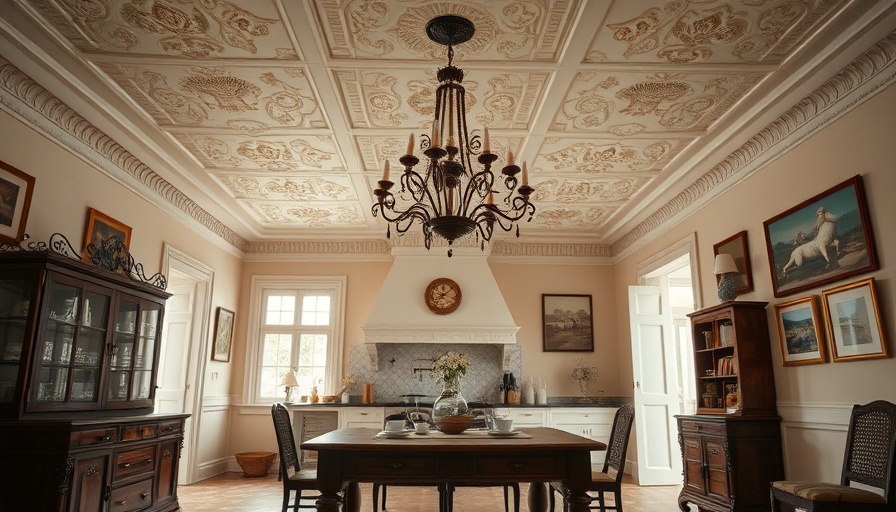
Transform Your Home: Genius Ways to Cover Popcorn Ceilings
Have you ever looked up at your textured popcorn ceiling and wished for a change? If your home features this outdated design, you're certainly not alone. Many homeowners face the challenge of these once-popular, now-dreaded ceilings. Instead of scraping and sanding, why not explore some creative solutions to elevate the charm of your living space?
Understanding the Risks: Safety First!
Before diving into any ceiling project, it’s essential to consider safety protocols. Homes built before the 1980s may contain asbestos or lead paint, which can pose serious health hazards. It's advisable to conduct a simple test before starting any DIY project to ensure your ceilings are safe to work with. Never hesitate to consult with professionals if you suspect hazardous materials; they can safely guide you through removal or covering options.
Covering Your Ceilings: 8 Impressive Solutions
Once you've ensured that your ceiling poses no risks, consider these eight effective methods to cover a popcorn ceiling:
1. Pressed Tin Ceiling
This stunning option can add a luxurious vintage feel to your space, although it may be one of the pricier solutions (averaging $2 to $15 per square foot). Faux tin tiles can provide a similar aesthetic at a more affordable cost.
2. Track System Ceiling
The Armstrong Easy-Up track system is a convenient option if you want minimal hassle. Installation is straightforward with various stylish designs and looks, available for around $2 per square foot.
3. Beadboard Ceiling
A timeless choice, beadboard is both charming and easy to install. Pre-primed sheets can save you time, making this option budget-friendly while still being visually appealing.
4. Wood Paneled Ceiling
This option delivers warmth and character. Cedar wood planks create an inviting atmosphere, and they are light enough for DIY enthusiasts to install easily.
5. Wallpaper Ceiling
Applying wallpaper directly to the ceiling can transform the atmosphere of a room. If the texture is too pronounced, consider skim coating before wallpapering for the best results.
6. Plywood Ceiling
Covering a popcorn ceiling with plywood can create an impactful focal point. This option is affordable and allows for a rustic or modern look, depending on your choice of wood.
7. Painted Textured Ceiling
A quick, less intrusive approach can simply involve a fresh coat of paint. Choose bold colors to add personality without the need for extensive remodeling.
8. Skim Coat or Drywall
When in doubt, you could apply a skim coat or even install new drywall over your existing ceiling. This method provides a smooth finish while minimizing mess.
Embrace a New Ceiling Style
By choosing one of these creative methods, you'll not only hide the undesirable popcorn texture but also breathe fresh life into your home. Your ceiling is not just a functional element but a canvas of creativity. Remember, it’s about turning your home into a space that reflects your personal style.
Would you like to learn more about DIY renovations and home improvement tips? Consider exploring resources that provide inspiration and guidance on transforming your space with confidence!
 Add Row
Add Row  Add
Add 




Write A Comment